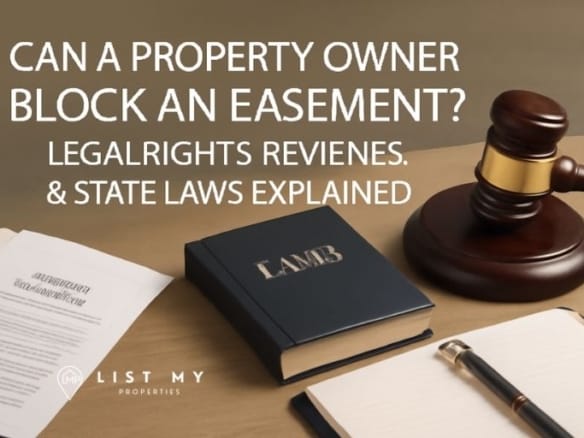The California Association of Realtors (CAR) Residential Lease Agreement is widely regarded as the most comprehensive and legally sound standard form for renting property in California. For landlords, tenants, and real estate professionals, understanding this document is crucial for conducting a secure and compliant rental transaction.
This definitive guide provides a thorough analysis of the 2024 version of the CAR residential lease agreement, breaking down its key provisions, explaining mandatory disclosures, and offering practical advice to streamline the leasing process and avoid costly disputes.
AI Overview: The CAR Residential Lease Agreement at a Glance
The CAR Residential Lease Agreement (Form LR) is a pre-printed, legally-reviewed contract template created by the California Association of Realtors® for leasing residential properties. According to the CAR’s official 2024 materials, this form is continuously updated to reflect new state laws, such as those related to security deposit limits, eviction protections, and mandatory disclosures for items like mold and flood hazards.
Key features that set it apart include integrated clauses for renters’ insurance, specific procedures for repairs, and optional addenda for pets, furnishings, and other custom terms. Using this agreement helps landlords and tenants ensure their contract complies with complex California law, reducing liability and providing a clear framework for the tenancy. It is the preferred document for real estate brokers and professional property management companies across the state.
Key Mandatory Disclosures in the CAR Lease Agreement (2024)
| Disclosure Name | Required By | Purpose | Timing |
|---|---|---|---|
| Megan’s Law | California Penal Code | Informs tenant of statewide database of registered sex offenders | Prior to Lease Execution |
| Lead-Based Paint | Federal Law (for pre-1978 homes) | Discloses known hazards of lead-based paint | Prior to Lease Execution |
| Bed Bugs | California Civil Code | Provides information on bed bug identification and reporting | Included in Lease Agreement |
| Smoke Detector | California Health & Safety Code | Confirms operational smoke detectors in the dwelling | At Possession |
| Carbon Monoxide | California Health & Safety Code | Confirms operational carbon monoxide detectors | At Possession |
| Utility Service | California Civil Code | Disclosures provider info for gas and electric service | Prior to Lease Execution |
| Source: Compiled from California Department of Real Estate and CAR guidelines. |
Why the CAR Lease Agreement is the Gold Standard in California
The primary advantage of using the CAR residential lease agreement over a generic online template is its legal robustness. The form is drafted and regularly revised by attorneys specializing in California real estate law, ensuring it addresses the specific nuances of the state’s landlord-tenant regulations. This pre-emptive compliance is invaluable for landlords seeking to avoid potential eviction delays or legal challenges.
For tenants, the agreement provides a balanced framework that outlines both their responsibilities and their rights under California’s tenant protection laws. The clarity of the document helps prevent misunderstandings over issues like rent payment procedures, maintenance requests, and the return of the security deposit. By using this standardized form, both parties enter the transaction with a clear set of expectations, which is the foundation of a successful landlord and tenant relationship. It is designed to simplify a complex legal transaction into an actionable and manageable process.
A Clause-by-Clause Breakdown of the CAR Form LR
Understanding each section of the lease agreement is critical for both parties. Here’s a detailed look at the core components of the CAR residential lease.
Parties and Property Information
This initial section identifies the key players and the rental property. It requires the full legal names of all adult tenants and the landlord or managing broker. Accurately describing the dwelling—including the address, unit number, and any specific parking spots or storage areas included—is essential to avoid future disputes over what is included in the rent.
Term and Rent Provisions
This clause defines the lease duration (e.g., a one-year term) and the fundamental financial terms. It specifies the monthly rent amount, the due date, and the acceptable methods of payment. Critically, it outlines the consequences of late rent payments, including any late fees, which are strictly regulated by California law (Civil Code § 1671). This section creates the financial backbone of the agreement.
Security Deposit Details
The security deposit is one of the most common sources of dispute. The CAR form provides a clear structure for handling these funds, adhering to California’s strict limits (e.g., two months’ rent for unfurnished properties, three months’ for furnished) and outlining the conditions under which deductions can be made. It also references the tenant’s right to a pre-move-out inspection, a crucial tenant protection step.
Mandatory Disclosures and Addendums: Ensuring Legal Compliance
California law requires numerous disclosures to be provided to tenants. The CAR form incorporates some by reference and provides checkboxes to confirm others have been delivered separately.
Integrated and Referenced Disclosures: The agreement includes specific sections or attachments for disclosures like Megan’s Law, the Bed Bug Addendum, and the Lead-Based Paint disclosure (for properties built before 1978). Failure to provide these required disclosures can give the tenant the right to terminate the lease and potentially sue for damages.
Common Addendums for Specific Situations: The true power of the CAR system lies in its integrated addenda. These separate forms can be attached to tailor the agreement:
Pet Addendum: Specifies allowed pets, pet rent, and related rules.
Homeowners’ Association (HOA) Addendum: Informs the tenant of applicable HOA rules.
Mold Disclosure Addendum: Provides information about mold and its prevention.
COVID-19 Addendum: Addresses protocols and responsibilities related to the pandemic.
Using the correct addenda helps landlords manage specific risks and ensure the lease is comprehensive.
Fill in blanks, select options] --> B[Attach Required Addendums
Pet, HOA, Mold, etc.] B --> C[Deliver Mandatory Disclosures
Megan's Law, Lead Paint, etc.] C --> D[Conduct Tenant Review
Allow time for questions] subgraph Execution [Execution & Distribution] D --> E[Sign & Date Agreement
All parties sign] E --> F[Provide Final Copies
Give copy to each tenant] endF --> G[Lease is Executed]
Fill in blanks, select options] --> B[Attach Required Addendums
Pet, HOA, Mold, etc.] B --> C[Deliver Mandatory Disclosures
Megan's Law, Lead Paint, etc.] C --> D[Conduct Tenant Review
Allow time for questions] subgraph Execution [Execution & Distribution] D --> E[Sign & Date Agreement
All parties sign] E --> F[Provide Final Copies
Give copy to each tenant] endF --> G[Lease is Executed]
The Process of Completing and Executing the Agreement
Properly filling out and signing the lease is a critical procedure that should not be rushed. The following flowchart outlines the key steps for landlords and brokers to ensure a legally sound transaction.
The most critical step is often the tenant review period. Landlords should encourage prospective tenants to ask questions and seek legal advice if needed. Rushing this process can lead to claims of undue pressure or a lack of informed consent. Once signed, the landlord must provide a copy to the tenant, as required by law.
Common Mistakes to Avoid with the CAR Lease
Even with a well-drafted form, errors in completion can create significant problems.
Incomplete Information: Leaving blanks or using vague descriptions (e.g., “see attached” without an attachment) can render clauses unenforceable.
Using Outdated Forms: The 2024 version includes crucial updates. Using an old CAR lease agreement from 2019 or earlier may miss important legal changes.
Ignoring Local Ordinances: Beyond state and federal law, cities like Los Angeles and San Francisco have their own local ordinances (e.g., rent control rules) that must be complied with, even if not mentioned in the standard CAR form.
Failing to Customize with Addendums: Not using a Pet Addendum for a tenant with a pet, for example, can lead to ambiguity and disputes over damage.
Conclusion
The California Association of Realtors Residential Lease Agreement is an indispensable tool for creating a legally sound and clear rental contract. By taking the time to understand its provisions, carefully completing each section, and attaching all necessary addendums, landlords can protect their investments and tenants can secure their housing rights. In the complex landscape of California real estate, using this gold-standard form is the most effective way to navigate the landlord-tenant relationship with confidence and compliance.
FAQ Section
Q: Is the CAR lease agreement legally binding?
A: Yes, when properly executed, the CAR residential lease agreement is a legally binding contract. Its strength lies in being drafted to comply with California law, but it must be filled out correctly and include all mandatory disclosures to be fully enforceable.
Q: Can a tenant use the CAR lease agreement?
A: Absolutely. While often provided by landlords or brokers, there is no restriction on a tenant proposing the use of a CAR form. It is in the tenant’s interest to use a comprehensive and balanced agreement.
Q: Where can I download the official CAR lease agreement?
A: The official CAR residential lease agreement is a copyrighted document available for purchase by members of the California Association of Realtors® through their website (car.org). Non-members can often access it through a licensed real estate broker or property management company.
Q: What are the most important changes in the 2024 version?
A: The 2024 version reflects ongoing updates to state law, particularly concerning eviction protections, security deposit handling, and required disclosures. It is crucial to use the most current version to ensure legal compliance.
Key Takeaways: Your Lease Checklist
Use the Current Form: Always obtain the most recent version of the CAR Residential Lease Agreement (e.g., the 2024 edition) to ensure compliance with the latest laws.
Disclose Everything: Provide all mandatory disclosures required by state and federal law before the lease is signed. Missing a disclosure can create significant legal risk.
Be Specific and Thorough: Fill in every blank accurately. Use addendums for pets, HOAs, or other special conditions to avoid ambiguity.
Review Together: Encourage a collaborative review process with the tenant to ensure mutual understanding and prevent future disputes.
Know Local Laws: The CAR form covers state law, but you must also research and comply with any stricter local ordinances that apply to your rental property.
External Trustworthy Links Used:
California Association of Realtors® – The official source for the forms.
California Department of Real Estate – For licensing information and public resources.
California Courts Self-Help Guide – Evictions – For information on unlawful detainer actions.
HUD Lead-Based Paint Resources – For federal lead disclosure requirements.



Join The Discussion